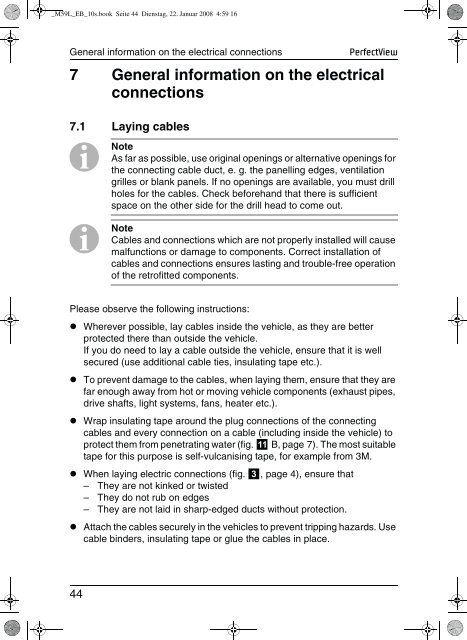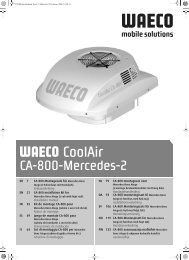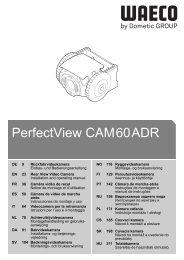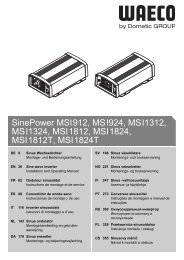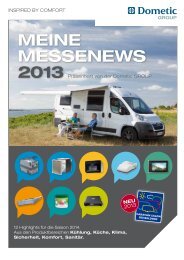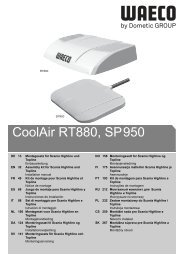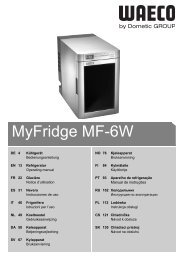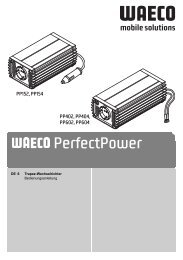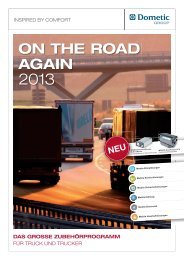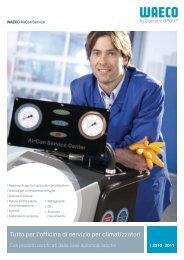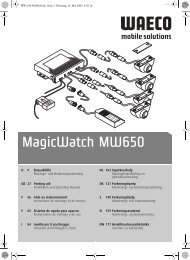PerfectView M59L
PerfectView M59L
PerfectView M59L
Create successful ePaper yourself
Turn your PDF publications into a flip-book with our unique Google optimized e-Paper software.
_<strong>M59L</strong>_EB_10s.book Seite 44 Dienstag, 22. Januar 2008 4:59 16<br />
General information on the electrical connections<br />
<strong>PerfectView</strong><br />
7 General information on the electrical<br />
connections<br />
7.1 Laying cables<br />
I Note<br />
As far as possible, use original openings or alternative openings for<br />
the connecting cable duct, e. g. the panelling edges, ventilation<br />
grilles or blank panels. If no openings are available, you must drill<br />
holes for the cables. Check beforehand that there is sufficient<br />
space on the other side for the drill head to come out.<br />
I Note<br />
Cables and connections which are not properly installed will cause<br />
malfunctions or damage to components. Correct installation of<br />
cables and connections ensures lasting and trouble-free operation<br />
of the retrofitted components.<br />
Please observe the following instructions:<br />
• Wherever possible, lay cables inside the vehicle, as they are better<br />
protected there than outside the vehicle.<br />
If you do need to lay a cable outside the vehicle, ensure that it is well<br />
secured (use additional cable ties, insulating tape etc.).<br />
• To prevent damage to the cables, when laying them, ensure that they are<br />
far enough away from hot or moving vehicle components (exhaust pipes,<br />
drive shafts, light systems, fans, heater etc.).<br />
• Wrap insulating tape around the plug connections of the connecting<br />
cables and every connection on a cable (including inside the vehicle) to<br />
protect them from penetrating water (fig. a B, page 7). The most suitable<br />
tape for this purpose is self-vulcanising tape, for example from 3M.<br />
• When laying electric connections (fig. 3, page 4), ensure that<br />
– They are not kinked or twisted<br />
– They do not rub on edges<br />
– They are not laid in sharp-edged ducts without protection.<br />
• Attach the cables securely in the vehicles to prevent tripping hazards. Use<br />
cable binders, insulating tape or glue the cables in place.<br />
44


